In this episode of Coffee With Q, host Rene Perras sits down with Joe Osborne, a seasoned medical malpractice trial lawyer, to explore the complex world of medical errors, patient rights, and legal recourse for victims of medical negligence.
Medical errors happen every day in healthcare settings across the country. But as Joe Osborne explains in our interview, not every medical error constitutes malpractice.
“Medical errors come in all shapes and sizes,” Osborne shared during our conversation. These can include “misinterpretation of studies, lack of appreciation of significant clinical findings, misdiagnosis, lack of communication from healthcare providers to patients, and failures to follow up on testing.”
The distinction between a simple error and actual malpractice lies in what Osborne describes as “a deviation or falling below the standard of care.” This occurs when healthcare providers either actively do something wrong or fail to do something that similarly qualified professionals would consider negligent.
Boca Raton, Florida Medical Malpractice Lawyer Joe Osborne
The Life-Altering Impact of Medical Negligence
During our interview, Osborne shared a particularly striking case that demonstrates the devastating consequences of medical errors. He described a situation where a surgeon who had been injured in a small aircraft accident failed to disclose his injuries to the hospital where he worked.
The surgeon, experiencing extreme pain during what should have been a routine valve replacement surgery, made a catastrophic error that resulted in the patient’s death. The medical examiner ruled it as “medical therapeutic misadventure,” with the doctor deemed the direct cause of death.
This case resulted in legal action against both the surgeon and the hospital, highlighting the importance of proper supervision and disclosure protocols in healthcare settings.
Prevention Is Key: How Healthcare Systems Can Reduce Errors
One of the most valuable insights Osborne shared in our conversation was about prevention strategies that could significantly reduce medical errors:
- Follow-up systems are crucial: “Follow-up systems within hospitals and doctors’ offices are extremely important because when things fall through the cracks, they can have devastating consequences for patients,” Osborne emphasized.
- Communication is vital: Many cases Osborne handles involve failures in communication, where test results or concerning findings aren’t properly communicated to patients. He gave the example of a patient whose chest X-ray showed a suspicious finding that wasn’t communicated, leading to a delayed lung cancer diagnosis.
- Implement “over-reads”: Having a second board-certified specialist review test results can catch potential problems that might otherwise be missed. This extra layer of verification can be life-saving, especially with time-sensitive conditions like heart disease or cancer.
The Challenge of Discovery: Why Patients Often Don’t Know
A particularly concerning aspect of medical errors is that patients often don’t realize they’ve occurred until much later. Osborne explained Florida’s statute of limitations, which allows patients to bring a case within two years of when malpractice was committed, or within two years of when they’re on notice that a problem occurred.
“Patients may not know… oftentimes it’s not till later, many months or sometimes years later when the disease process actually advances and there’s a diagnosis, that we look back at the medical records,” Osborne noted. Unfortunately, by then, it can sometimes be “too late.”
Getting Help: Resources for Patients
If you believe you or a loved one may have been affected by medical malpractice, it’s important to consult with experienced legal professionals who understand the complexities of medical error cases.
Joe Osborne and his team at Osborne and Francis specialize in advocating for patients’ rights in medical malpractice cases. You can learn more about their work by visiting realtoughlawyers.com.
About Coffee With Q
Coffee With Q is dedicated to helping consumers find justice through informative interviews with legal experts. Hosted by legal news reporter Rene Perras, the show covers a wide range of topics affecting consumer rights. Join us for our next episode as we continue to explore important issues and provide valuable information to help you navigate complex legal matters.
Follow us on social media and subscribe to our channel to stay updated on new episodes and legal insights.
Disclaimer: The information provided in this blog and accompanying video is for general informational purposes only and should not be construed as legal advice. Every case is unique, and results may vary. If you believe you have experienced medical malpractice, please consult with a qualified attorney to discuss your specific situation.



